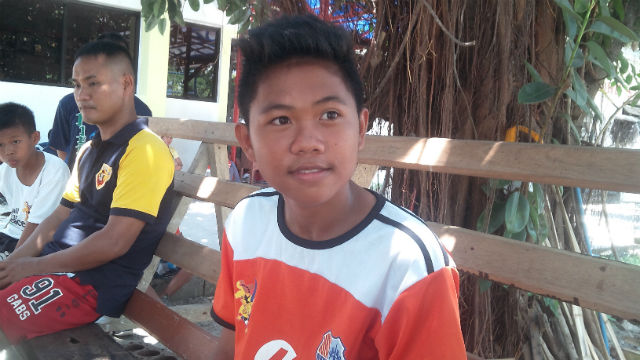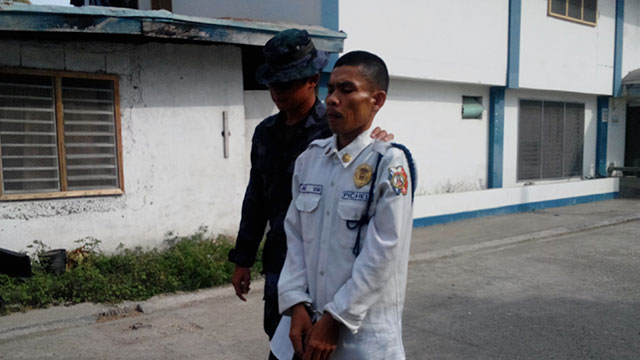Kidnap for ransom groups in Jolo have become increasingly sophisticated and are now working in units that operate like a small army.
USING three glasses filled with kahawa (Tausug word for coffee), an Armed Forces of the Philippines (AFP) intelligence officer illustrated how kidnap for ransom groups have streamlined their cross border kidnapping modus operandi.
“Imagine these glasses are cells. First cell will do intelligence gathering in Semporna, the second cell which is also based in Semporna will do the kidnapping and once they reach Philippines waters, they will pass the hostages to the third cell,” said the officer at a house of a prominent individual in Jolo town on the notorious Jolo island.
The latest victims abducted from Semporna are Gao Huayuan, a 29-year-old tourist from Shanghai, and Marcy Dayawan, a 40-year-old Filipina resort worker. Filipino gunmen kidnapped them from Singamata Reef Resort at about 10.30pm on April 3.
The kidnap for ransom (KFR) groups have changed their modus operandi, according to Filipino intelligence officers and security experts interviewed by The Star.
“In 2000, a KFR group consisting of 30 armed men travelled in several boats from Sulu to kidnap 21 people in Sipadan and then returned to Sulu.
That was the same modus operandi when they kidnapped 20 people (including three Americans) from Dos Palmas Resort (in Palawan, Philippines) and brought them to Basilan island (about 120km from Jolo island),” said the AFP intelligence officer who did not want to be identified.
Pointing to the three glasses filled with kahawa grown in Sulu, he added: “when you travel in a big group, there is a possibility that the Philippine and Malaysian navies will detect you.”
“But when you travel in a small group,” he said, holding a single glass, “you don’t attract attention.”
Learning from their mistakes, the KFR groups streamlined their operation.
“Post Sipadan and Dos Palmas kidnappings, the KFR would send a cell group to Semporna. These operatives would either live as a local or work in a resort. That is their cover. Their actual job is to find a target and study the place and find the best time for them to kidnap.”
“The spotter will contact the mastermind and inform that the victim is in her room and security is relaxed,” he said.
His description of the modus operandi corresponds with what happened in Singamata Reef Resort on the night of the abduction. Armed men struck minutes after eight General Operations Force (GOF) personnel stationed in the resort had left the reef to conduct patrolling in a boat.
In the aftermath of the Singamata kidnapping, Eastern Sabah Security Command (Esscom) director-general Datuk Mohammad Mentek said an operation to clear the east coast area of moles or informers of cross-border criminals would be conducted.
When a target was identified, the KFR mastermind would inform the second cell. It was a light and quick team consisting of about seven gunmen embedded in Semporna.
“Before, they needed about 30 armed men to execute a kidnapping. Now they can kidnap with seven gunmen,” he said.
“How well armed are these men?” I asked.
“Just like your escorts. They are like a small army,” he said, pointing at the two Philippines National Police policemen, armed with a M204 grenade launcher, pistol and shotgun, who provided security during my three-day trip to Jolo island.
The crew of the second cell would know Semporna waters like the back of their hand, said the AFP intelligence officer.
His account is consistent with Esscom investigations into the Singamata kidnapping. Mohammad has said that at least four of the seven gunmen involved in the kidnapping were no strangers to Sabah’s diving haven of Semporna.
Investigations, he said, had indicated that the four were familiar with the Semporna waters including Sipadan, Mabul and Kapalai islands as they have families and friends living in coastal villages in the area.
“Our investigations with the police have led to the conclusion that these kidnappers will seek shelter with their friends and families every time they come here,” he said.
After entering Philippine waters, the AFP intelligence officer said the second cell will hand over the hostages to the third cell.
“This is so that they can avoid heat (pressure from security forces),” he said.
Octavio A. Dinampo, the CEO of Assist Jolo, which is an NGO, agrees with the AFP intelligence officer’s description of the KFR’s streamlined modus operandi.
Since he was kidnapped with famous Filipino news anchor Ces Drillion and others on Jolo island on June 8, 2008, Dinampo, a 57-year-old Suluk, has been investigating the business of kidnapping in Sulu province, nearby Tawi Tawi islands and Sabah.
Dinampo, who teaches political science in Mindanao State University in Jolo island, said the cross-border kidnappings between Sulu and Semporna were masterminded by smugglers.
He said the actual kidnapping was not done by the Abu Sayyaf but smugglers based on small islands in the Sulu province such as Pandami, Pata, and Siasi which are near Jolo island.
“You need to be an expert on islands and the sea to do cross-border kidnapping over the Sulu seas,” he said.
Esscom director-general Mohammad has been quoted by the media as saying that the four identified Singamata abductors were also involved in various smuggling activities in Semporna.
From smuggling of guns, drugs, cigarettes and sugar in the Sulu archipelago, the smugglers have evolved into kidnapping.
“It is a natural evolution for some of the smugglers who own money, powerful arms and fast boats that can even compete with the Philippine navy to finance a kidnapping,” he said.
“It is natural for them to think of kidnapping as an enterprising business. This explains why Sipadan and Dos Palmas happened.”
Cross-border kidnapping is an expensive operation, said Dinampo.
“The kidnapping crew is presumed dead before he goes for the kidnapping. And the mastermind will set aside money in the event a crew member is killed so that his family can move on. Just say you have seven crew members and you have set aside 100,000 pesos (RM7,330) for each of them, that means you need to set aside 700,000 pesos (RM51,000),” he said.
The mastermind also needs to buy sophisticated weapons and equipment for his cells embedded in Semporna and in Tawi Tawi islands in southern Philippines.
“He needs to pay for the house his spotters have to stay in Semporna. The spotters need to be equipped with satellite phones which they use to communicate in split seconds with the mastermind in coded words,” he said.
What’s new for the KFR group, according to Dinampo, is they have placed their men in the Abu Sayyaf, Moro National Liberation Front and other armed groups in Jolo island.
“They need a trusted ‘branch manager’ in these armed groups as they will usually deposit the hostages with the Abu Sayyaf or other armed groups in Jolo island,” he said.
The moment the KFR group abducts hostages from Sabah, Dinampo said the mastermind would contact his ‘branch manager’.
“For example, the mastermind will tell his ‘branch manager’ that he had spent about 1.5mil pesos (RM110,000) and he wanted to make a 5mil-peso (RM360,000) profit, so he would sell a hostage for 6.5mil pesos (RM480,000) to the Abu Sayyaf and it would be up to them to jack up the ransom,” he said.
The KFR mastermind outsources the holding of the hostage to Abu Sayyaf or armed groups in Jolo island because he does not have the “muscle” to keep them.
“Abu Sayyaf is a larger armed group. They have enough men and firepower to hold on to the hostages when pursued by the security forces,” Dinampo said.
“Once the KFR hands over the hostage to the Abu Sayyaf (or other armed groups) in Jolo, they are out of the heat generated by the kidnapping.”
When asked if another cross border kidnapping would happen in Semporna, the AFP intelligence officer picked up a glass and said, “they are already there” and placed it next to a paper he had marked “Sabah”.
http://www.thestar.com.my/News/Nation/2014/05/04/Where-kidnapping-is-a-lucrative-industry/










